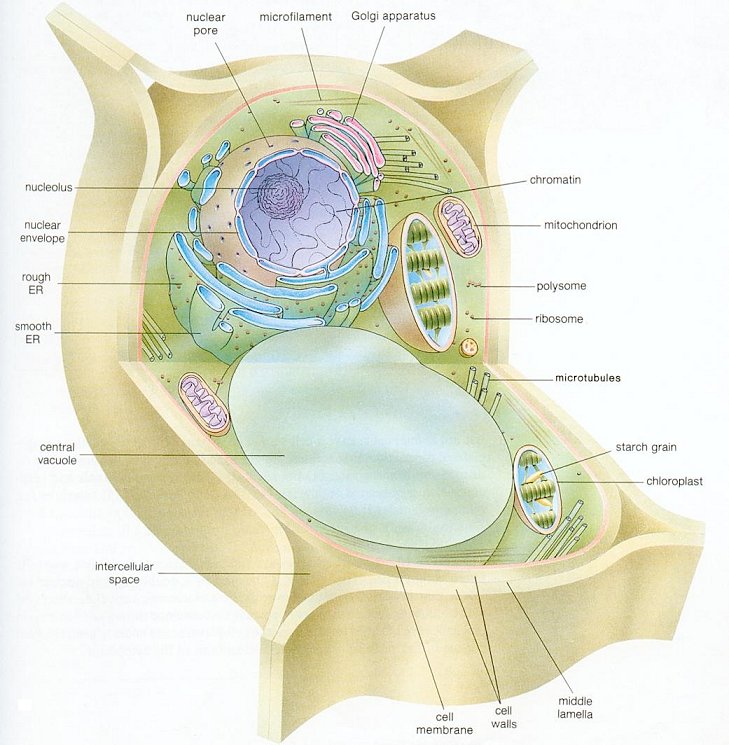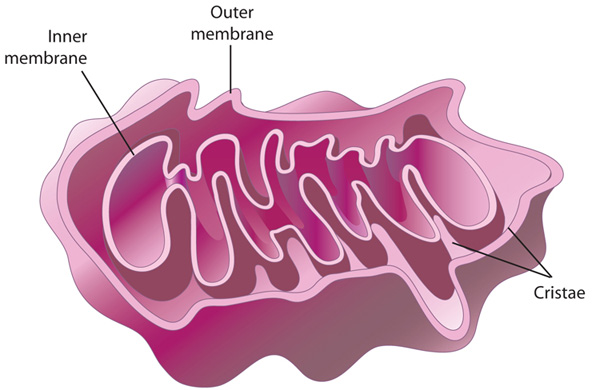Functions Of Animal Cell Biography
Source:- Google.com.pk
A BIO 102 General Biological Sciences (3)
Introduction to the major concepts in biology and a survey of the common structures of organisms, including humans, and their functions at the molecular, cellular, organismal and population levels. Emphasis placed on principles of ecology, inheritance, evolution and physiology relevant to human society. May not be taken for credit by students who have credit in A BIO 110, 111, 120, 121, or other equivalent introductory courses. Does not yield credit toward the major in biology. May not be offered in 2013-2014.
A BIO 117 Nutrition (3)
The biological roles of energy, protein, vitamins, and minerals; digestion, absorption, and storage of nutrients, the chemical nature of foods and food processing; assessment of nutritional status; interactions of nutrients and disease; food supplementation and community nutrition. Does not yield credit toward the major in biology.
A BIO 120 General Biology I (3)
First course in a two-semester sequence which offers a comprehensive survey of the structures and functions common to all living systems at the molecular, cellular, organismal, and population levels. This course emphasizes evolutionary principles, ecology, anatomy and physiology. May not be taken for credit by students who have credit for A BIO 110. Offered fall semester only.
A BIO 121 General Biology II (3)
Second course in a two-semester sequence which offers a comprehensive survey of the structures and functions common to all living systems at the molecular, cellular, organismal, and population levels. This course emphasizes molecular and cell biology, genetics and neurobiology. May not be taken for credit by students who have credit for A BIO 111. Prerequisite(s): A BIO 110 or 120. Offered spring semester only.
T BIO 176 Genomics & Biotechnology: The Broad Ranging Impact on Mankind (3)
The sequencing of the genomes of a large number of organisms, from bacteria to human, has provided enormous insights into a wide range of human endeavors. Almost no aspect of human knowledge has been untouched by the information being compiled. The information gathered has also driven the development of new technologies designed to explore and exploit the information gathered. The goal of this course will be to familiarize students with the nature of the information that can be gathered from genomics and the benefits derived from the new biotechnologies. Also, simple research problems will be assigned to introduce students to the web based resources and programs used to analyze genomic data. Open to Honors College students only.
A BIO 199 Contemporary Issues in Biological Sciences (1–3)
Issues from the current literature in selected areas of biological sciences. Particular areas of study to be announced each semester. Intended for students interested in exploring in depth themes covered in large lecture classes. May be repeated for credit when topic varies. Prerequisite(s): consult instructor for specific prerequisites. S/U or A-E graded. May not be offered in 2013-2014.
A BIO 201 (formerly A BIO 122) Introduction to Biological Investigations I
First course in a two-semester laboratory sequence designed for biology majors. Students will learn the process of scientific investigation, collaborate in designing, conducting and analyzing experiments, develop the ability to communicate in scientific format and gain expertise in a variety of laboratory instrumentation, techniques, skills and procedures. One laboratory period per week. May not be taken by students with credit for A BIO 110 or A BIO 122. Prerequisites(s): A BIO 120, A BIO 121, and A CHM 120, 121, 124, 125. Offered fall semester only. Effective fall 2013 and beyond, course fee applies. Consult the Schedule of Classes.
A BIO 202Z (formerly A BIO 123Z) Introduction to Biological Investigations II
Second course in a two-semester laboratory sequence designed for biology majors. Students will learn the process of scientific investigation, collaborate in designing, conducting and analyzing experiments, develop the ability to communicate in scientific format and gain expertise in a variety of laboratory instrumentation, techniques, skills and procedures. One laboratory period per week. May not be taken by students with credit for A BIO 111 or 123Z. Prerequisite(s): A BIO 120, A BIO 121, A BIO 201, and A CHM 120, 121, 124, 125. Offered spring semester only. Effective fall 2013 and beyond, course fee applies. Consult the Schedule of Classes.
A BIO 205 Human Genetics (3)
Survey of human genetics emphasizing the principles and mechanisms of inheritance and including the analysis of the genetic material of humans; the behavior of genes in individuals families, and populations; and the implications for human behavior and evolution, medicine, and society. Does not yield credit toward the major in biology. Prerequisite(s): A BIO 110 or 120, and 111 or 121, or permission of instructor.
A BIO 209 The Human Organism (3)
An introduction to the human organism focusing on evolution, development and behavior, and emphasizing applications and implications for modern life and human society. Does not yield credit toward the major in biology. May not be offered in 2013-2014.
A BIO 212Y Introductory Genetics (4)
Genetics from the classical Mendelian Laws of inheritance to molecular genetics. Topics will include: DNA structure and replication; Mendelian genetics and recombination; population, fungal, somatic cell, and bacterial genetics; gene organization; the genetic code; mechanisms of gene expression and regulation; and applications of genetic technology. Three class periods and one discussion section. Prerequisite(s): A BIO 110 or 120, and a grade of C (2.00) or better in A BIO 111 or 121.
A BIO 217 Cell Biology (3)
An introduction to modern cell biology. This course will present the basic organization of eukaryotic cells while stressing their elaborate structural-functional integration. The cells fundamental properties conserved through evolution will be stressed. Prerequisite(s): A BIO 110 or 120, and a grade of C (2.00) or better in A BIO 111 or 121.
A BIO 218 Introduction to Plant Biology (3)
An introduction to the great group of organisms that form the basis of our food web and provide us with our oxygen. Topics will include plant origins and evolution, physiology, morphology, and development. Along the way we will consider more general principles of body design and pattern formation, the unfolding of complex form from relatively unstructured beginnings. Prerequisite(s): A BIO 110 or 120 and 201, and A BIO 111 or 121 and 202Z, or permission of instructor.
A BIO 222 Biological Consequences of Global Climate Change (2)
Introduction to the background, predictions, and empirical evidence for biological effects of increases in atmospheric greenhouse gases. Emphasis on regional-scale consequences for terrestrial and aquatic ecosystems, including agricultural and urban ecosystems. Lectures, demonstrations, exercises, and discussions based on current science, with focus on NE North America. Prerequisite(s): A BIO 110 or A BIO 120 and 201.
T BIO 222Y Biological Consequences of Global Climate Change (3)
T BIO 222 is the Honors College version of A BIO 222; only one version may be taken for credit.
A BIO 230 People and Resources in Ecological Perspective (3)
Introduction to people as biological and cultural organisms and to ecological resources and services (e.g. energy flow and productivity, matter cycling, succession in ecosystems, use of resources, biodiversity). Concepts and connections to major issues of sustainability such as food and energy production, exploitation of resources (e.g. fresh water, oil, soil), pollution, global warming and associated climate changes, human overpopulation, public health and social problems all considered in a historical and contemporary context. Does not yield credit toward the major in biology. Prerequisite(s): sophomore standing or above. May not be offered in 2013-2014.
Functions Of Animal Cell Animal Cell Model Diagram Project Parts Structure Labeled Coloring and Plant Cell Organelles Cake


Functions Of Animal Cell Animal Cell Model Diagram Project Parts Structure Labeled Coloring and Plant Cell Organelles Cake


Functions Of Animal Cell Animal Cell Model Diagram Project Parts Structure Labeled Coloring and Plant Cell Organelles Cake


Functions Of Animal Cell Animal Cell Model Diagram Project Parts Structure Labeled Coloring and Plant Cell Organelles Cake


Functions Of Animal Cell Animal Cell Model Diagram Project Parts Structure Labeled Coloring and Plant Cell Organelles Cake


Functions Of Animal Cell Animal Cell Model Diagram Project Parts Structure Labeled Coloring and Plant Cell Organelles Cake


Functions Of Animal Cell Animal Cell Model Diagram Project Parts Structure Labeled Coloring and Plant Cell Organelles Cake


Functions Of Animal Cell Animal Cell Model Diagram Project Parts Structure Labeled Coloring and Plant Cell Organelles Cake


Functions Of Animal Cell Animal Cell Model Diagram Project Parts Structure Labeled Coloring and Plant Cell Organelles Cake


Functions Of Animal Cell Animal Cell Model Diagram Project Parts Structure Labeled Coloring and Plant Cell Organelles Cake


Functions Of Animal Cell Animal Cell Model Diagram Project Parts Structure Labeled Coloring and Plant Cell Organelles Cake
No comments:
Post a Comment